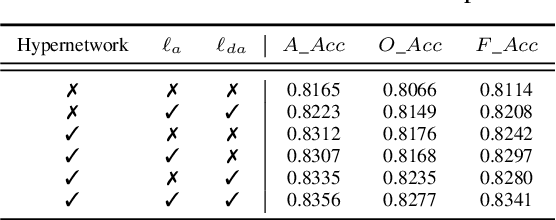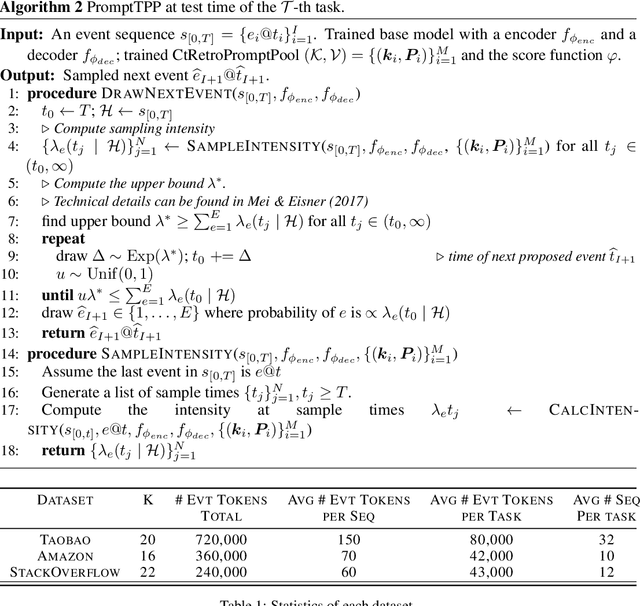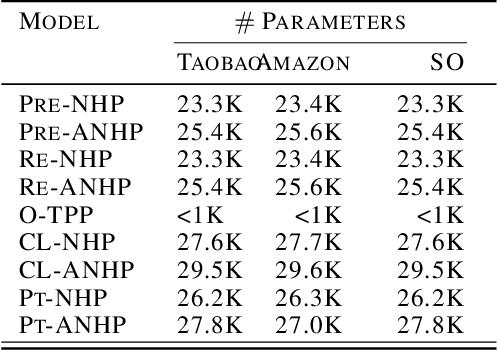Gangwei Jiang
Victor
What Makes a Good Reasoning Chain? Uncovering Structural Patterns in Long Chain-of-Thought Reasoning
May 28, 2025



Abstract:Recent advances in reasoning with large language models (LLMs) have popularized Long Chain-of-Thought (LCoT), a strategy that encourages deliberate and step-by-step reasoning before producing a final answer. While LCoTs have enabled expert-level performance in complex tasks, how the internal structures of their reasoning chains drive, or even predict, the correctness of final answers remains a critical yet underexplored question. In this work, we present LCoT2Tree, an automated framework that converts sequential LCoTs into hierarchical tree structures and thus enables deeper structural analysis of LLM reasoning. Using graph neural networks (GNNs), we reveal that structural patterns extracted by LCoT2Tree, including exploration, backtracking, and verification, serve as stronger predictors of final performance across a wide range of tasks and models. Leveraging an explainability technique, we further identify critical thought patterns such as over-branching that account for failures. Beyond diagnostic insights, the structural patterns by LCoT2Tree support practical applications, including improving Best-of-N decoding effectiveness. Overall, our results underscore the critical role of internal structures of reasoning chains, positioning LCoT2Tree as a powerful tool for diagnosing, interpreting, and improving reasoning in LLMs.
Learning to Substitute Components for Compositional Generalization
Feb 28, 2025Abstract:Despite the rising prevalence of neural language models, recent empirical evidence suggests their deficiency in compositional generalization. One of the current de-facto solutions to this problem is compositional data augmentation, which aims to introduce additional compositional inductive bias. However, existing handcrafted augmentation strategies offer limited improvement when systematic generalization of neural language models requires multi-grained compositional bias (i.e., not limited to either lexical or structural biases alone) or when training sentences have an imbalanced difficulty distribution. To address these challenges, we first propose a novel compositional augmentation strategy called Component Substitution (CompSub), which enables multi-grained composition of substantial substructures across the entire training set. Furthermore, we introduce the Learning Component Substitution (LCS) framework. This framework empowers the learning of component substitution probabilities in CompSub in an end-to-end manner by maximizing the loss of neural language models, thereby prioritizing challenging compositions with elusive concepts and novel contexts. We extend the key ideas of CompSub and LCS to the recently emerging in-context learning scenarios of pre-trained large language models (LLMs), proposing the LCS-ICL algorithm to enhance the few-shot compositional generalization of state-of-the-art (SOTA) LLMs. Theoretically, we provide insights into why applying our algorithms to language models can improve compositional generalization performance. Empirically, our results on four standard compositional generalization benchmarks(SCAN, COGS, GeoQuery, and COGS-QL) demonstrate the superiority of CompSub, LCS, and LCS-ICL, with improvements of up to 66.5%, 10.3%, 1.4%, and 8.8%, respectively.
General Time-series Model for Universal Knowledge Representation of Multivariate Time-Series data
Feb 05, 2025



Abstract:Universal knowledge representation is a central problem for multivariate time series(MTS) foundation models and yet remains open. This paper investigates this problem from the first principle and it makes four folds of contributions. First, a new empirical finding is revealed: time series with different time granularities (or corresponding frequency resolutions) exhibit distinct joint distributions in the frequency domain. This implies a crucial aspect of learning universal knowledge, one that has been overlooked by previous studies. Second, a novel Fourier knowledge attention mechanism is proposed to enable learning time granularity-aware representations from both the temporal and frequency domains. Third, an autoregressive blank infilling pre-training framework is incorporated to time series analysis for the first time, leading to a generative tasks agnostic pre-training strategy. To this end, we develop the General Time-series Model (GTM), a unified MTS foundation model that addresses the limitation of contemporary time series models, which often require token, pre-training, or model-level customizations for downstream tasks adaption. Fourth, extensive experiments show that GTM outperforms state-of-the-art (SOTA) methods across all generative tasks, including long-term forecasting, anomaly detection, and imputation.
Interpretable Catastrophic Forgetting of Large Language Model Fine-tuning via Instruction Vector
Jun 18, 2024



Abstract:Fine-tuning large language models (LLMs) can cause them to lose their general capabilities. However, the intrinsic mechanisms behind such forgetting remain unexplored. In this paper, we begin by examining this phenomenon by focusing on knowledge understanding and instruction following, with the latter identified as the main contributor to forgetting during fine-tuning. Consequently, we propose the Instruction Vector (IV) framework to capture model representations highly related to specific instruction-following capabilities, thereby making it possible to understand model-intrinsic forgetting. Through the analysis of IV dynamics pre and post-training, we suggest that fine-tuning mostly adds specialized reasoning patterns instead of erasing previous skills, which may appear as forgetting. Building on this insight, we develop IV-guided training, which aims to preserve original computation graph, thereby mitigating catastrophic forgetting. Empirical tests on three benchmarks confirm the efficacy of this new approach, supporting the relationship between IVs and forgetting. Our code will be made available soon.
Mitigate Negative Transfer with Similarity Heuristic Lifelong Prompt Tuning
Jun 18, 2024Abstract:Lifelong prompt tuning has significantly advanced parameter-efficient lifelong learning with its efficiency and minimal storage demands on various tasks. Our empirical studies, however, highlights certain transferability constraints in the current methodologies: a universal algorithm that guarantees consistent positive transfer across all tasks is currently unattainable, especially when dealing dissimilar tasks that may engender negative transfer. Identifying the misalignment between algorithm selection and task specificity as the primary cause of negative transfer, we present the Similarity Heuristic Lifelong Prompt Tuning (SHLPT) framework. This innovative strategy partitions tasks into two distinct subsets by harnessing a learnable similarity metric, thereby facilitating fruitful transfer from tasks regardless of their similarity or dissimilarity. Additionally, SHLPT incorporates a parameter pool to combat catastrophic forgetting effectively. Our experiments shows that SHLPT outperforms state-of-the-art techniques in lifelong learning benchmarks and demonstrates robustness against negative transfer in diverse task sequences.
Understanding and Patching Compositional Reasoning in LLMs
Feb 22, 2024



Abstract:LLMs have marked a revolutonary shift, yet they falter when faced with compositional reasoning tasks. Our research embarks on a quest to uncover the root causes of compositional reasoning failures of LLMs, uncovering that most of them stem from the improperly generated or leveraged implicit reasoning results. Inspired by our empirical findings, we resort to Logit Lens and an intervention experiment to dissect the inner hidden states of LLMs. This deep dive reveals that implicit reasoning results indeed surface within middle layers and play a causative role in shaping the final explicit reasoning results. Our exploration further locates multi-head self-attention (MHSA) modules within these layers, which emerge as the linchpins in accurate generation and leveraing of implicit reasoning results. Grounded on the above findings, we develop CREME, a lightweight method to patch errors in compositional reasoning via editing the located MHSA modules. Our empirical evidence stands testament to CREME's effectiveness, paving the way for autonomously and continuously enhancing compositional reasoning capabilities in language models.
On the Opportunities of Green Computing: A Survey
Nov 09, 2023



Abstract:Artificial Intelligence (AI) has achieved significant advancements in technology and research with the development over several decades, and is widely used in many areas including computing vision, natural language processing, time-series analysis, speech synthesis, etc. During the age of deep learning, especially with the arise of Large Language Models, a large majority of researchers' attention is paid on pursuing new state-of-the-art (SOTA) results, resulting in ever increasing of model size and computational complexity. The needs for high computing power brings higher carbon emission and undermines research fairness by preventing small or medium-sized research institutions and companies with limited funding in participating in research. To tackle the challenges of computing resources and environmental impact of AI, Green Computing has become a hot research topic. In this survey, we give a systematic overview of the technologies used in Green Computing. We propose the framework of Green Computing and devide it into four key components: (1) Measures of Greenness, (2) Energy-Efficient AI, (3) Energy-Efficient Computing Systems and (4) AI Use Cases for Sustainability. For each components, we discuss the research progress made and the commonly used techniques to optimize the AI efficiency. We conclude that this new research direction has the potential to address the conflicts between resource constraints and AI development. We encourage more researchers to put attention on this direction and make AI more environmental friendly.
Towards Anytime Fine-tuning: Continually Pre-trained Language Models with Hypernetwork Prompt
Oct 19, 2023



Abstract:Continual pre-training has been urgent for adapting a pre-trained model to a multitude of domains and tasks in the fast-evolving world. In practice, a continually pre-trained model is expected to demonstrate not only greater capacity when fine-tuned on pre-trained domains but also a non-decreasing performance on unseen ones. In this work, we first investigate such anytime fine-tuning effectiveness of existing continual pre-training approaches, concluding with unanimously decreased performance on unseen domains. To this end, we propose a prompt-guided continual pre-training method, where we train a hypernetwork to generate domain-specific prompts by both agreement and disagreement losses. The agreement loss maximally preserves the generalization of a pre-trained model to new domains, and the disagreement one guards the exclusiveness of the generated hidden states for each domain. Remarkably, prompts by the hypernetwork alleviate the domain identity when fine-tuning and promote knowledge transfer across domains. Our method achieved improvements of 3.57% and 3.4% on two real-world datasets (including domain shift and temporal shift), respectively, demonstrating its efficacy.
Prompt-augmented Temporal Point Process for Streaming Event Sequence
Oct 13, 2023



Abstract:Neural Temporal Point Processes (TPPs) are the prevalent paradigm for modeling continuous-time event sequences, such as user activities on the web and financial transactions. In real-world applications, event data is typically received in a \emph{streaming} manner, where the distribution of patterns may shift over time. Additionally, \emph{privacy and memory constraints} are commonly observed in practical scenarios, further compounding the challenges. Therefore, the continuous monitoring of a TPP to learn the streaming event sequence is an important yet under-explored problem. Our work paper addresses this challenge by adopting Continual Learning (CL), which makes the model capable of continuously learning a sequence of tasks without catastrophic forgetting under realistic constraints. Correspondingly, we propose a simple yet effective framework, PromptTPP\footnote{Our code is available at {\small \url{ https://github.com/yanyanSann/PromptTPP}}}, by integrating the base TPP with a continuous-time retrieval prompt pool. The prompts, small learnable parameters, are stored in a memory space and jointly optimized with the base TPP, ensuring that the model learns event streams sequentially without buffering past examples or task-specific attributes. We present a novel and realistic experimental setup for modeling event streams, where PromptTPP consistently achieves state-of-the-art performance across three real user behavior datasets.
Deep Task-specific Bottom Representation Network for Multi-Task Recommendation
Aug 18, 2023



Abstract:Neural-based multi-task learning (MTL) has gained significant improvement, and it has been successfully applied to recommendation system (RS). Recent deep MTL methods for RS (e.g. MMoE, PLE) focus on designing soft gating-based parameter-sharing networks that implicitly learn a generalized representation for each task. However, MTL methods may suffer from performance degeneration when dealing with conflicting tasks, as negative transfer effects can occur on the task-shared bottom representation. This can result in a reduced capacity for MTL methods to capture task-specific characteristics, ultimately impeding their effectiveness and hindering the ability to generalize well on all tasks. In this paper, we focus on the bottom representation learning of MTL in RS and propose the Deep Task-specific Bottom Representation Network (DTRN) to alleviate the negative transfer problem. DTRN obtains task-specific bottom representation explicitly by making each task have its own representation learning network in the bottom representation modeling stage. Specifically, it extracts the user's interests from multiple types of behavior sequences for each task through the parameter-efficient hypernetwork. To further obtain the dedicated representation for each task, DTRN refines the representation of each feature by employing a SENet-like network for each task. The two proposed modules can achieve the purpose of getting task-specific bottom representation to relieve tasks' mutual interference. Moreover, the proposed DTRN is flexible to combine with existing MTL methods. Experiments on one public dataset and one industrial dataset demonstrate the effectiveness of the proposed DTRN.
 Add to Chrome
Add to Chrome Add to Firefox
Add to Firefox Add to Edge
Add to Edge